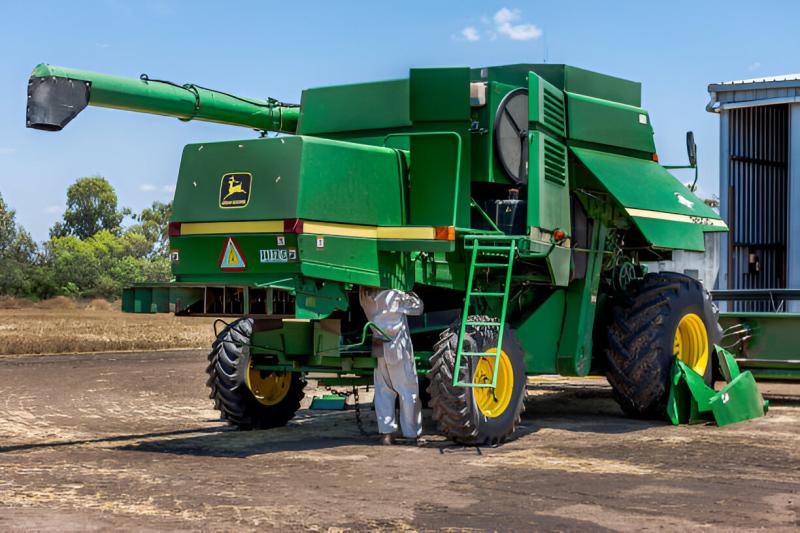Comparing John Deere Concave Types: Which One is Right for Your Crop?

When it comes to harvesting, choosing the right concave for your combine can make a significant difference in both efficiency and yield. John Deere offers a range of concave types designed to optimize performance across various crops and conditions. This article will delve into the differences among these concaves, helping you make an informed decision on which one is best suited for your farming needs.
Understanding Concave Types
Concaves are critical components of a combine harvester’s threshing system, playing a key role in separating the grain from the chaff. The choice of concave affects the flow of material through the machine, the amount of grain loss, and the overall efficiency of the harvest. John Deere offers several types of concaves, each tailored to specific crop types and harvesting conditions.
1. Standard Concaves
Best For: Corn, Soybeans, and Wheat
Standard concaves are the most versatile option and are designed to handle a wide range of crops. They feature a basic, smooth surface that provides effective threshing without excessive damage to the grain.
Pros:
Suitable for various crops, making them ideal for mixed farming operations.
Provides a balanced performance in terms of grain quality and throughput.
Cons:
May not optimize performance in highly specialized applications.
For farmers with a diverse crop portfolio, standard concaves offer a reliable and cost-effective solution.
2. Round Bar Concaves
Best For: Soybeans and Small Grains
Round bar concaves feature a series of round bars that create larger openings for the crop to pass through while retaining the grain. This design is particularly effective for crops that require a gentler threshing action, like soybeans.
Pros:
Reduces grain damage and helps preserve seed quality.
Improved flow of material through the combine, minimizing clogging.
Cons:
May not be as effective for larger grains or crops that require aggressive threshing.
Farmers specializing in soybeans or other small grains will benefit from the reduced grain loss and increased quality provided by round bar concaves.
3. Maximizer Concaves
Best For: Tough Conditions and High-Yield Crops
Maximizer concaves are designed for use in high-yielding and challenging harvesting conditions. They feature a unique design that allows for more aggressive threshing while maintaining grain integrity.
Pros:
High efficiency in tough harvesting conditions, such as wet or heavily lodged crops.
Enhanced separation performance, resulting in less grain loss.
Cons:
Potential for increased grain damage if not adjusted properly.
For farmers dealing with challenging crop conditions, Maximizer concaves can help maximize yield while minimizing losses.
4. Specialty Concaves
Best For: Specific Crops (e.g., Rice, Peas)
Specialty concaves are tailored for specific crops, optimizing performance in very particular harvesting situations. For instance, rice concaves may have a design that allows for effective threshing in wet conditions, while pea concaves might be configured to prevent seed damage.
Pros:
Tailored performance that addresses the unique challenges of specific crops.
Increased efficiency and reduced grain loss tailored to the crop.
Cons:
Limited versatility; not suitable for a wide range of crops.
Farmers who specialize in a single crop type can significantly benefit from using specialty concaves designed for their specific needs.
Factors to Consider When Choosing John Deere Concaves
When selecting the right concave, consider the following factors:
Crop Type
Different crops have varying threshing needs. Understanding the specific requirements of the crops you harvest is essential in making the right choice.
Harvesting Conditions
Moisture levels, crop maturity, and lodging can all affect the performance of your concave. Choose a concave that can adapt to these conditions for optimal results.
Combine Configuration
The type of combine you own may limit your concave options. Always check compatibility before making a purchase.
Personal Experience and Preferences
Finally, your own experience with different concave types can guide your decision. Some farmers may prefer specific designs based on past performance and satisfaction.
Conclusion
Selecting the right concave is critical for maximizing harvesting efficiency and grain quality. John Deere offers a diverse range of concave types, each designed for specific crops and conditions. By understanding the differences among standard, round bar, Maximizer, and specialty concaves, farmers can make informed decisions that align with their unique agricultural practices. Assessing factors such as crop type, harvesting conditions, and personal experience will ensure you choose the best concave for your needs, leading to a more successful harvest season.
Post Your Ad Here